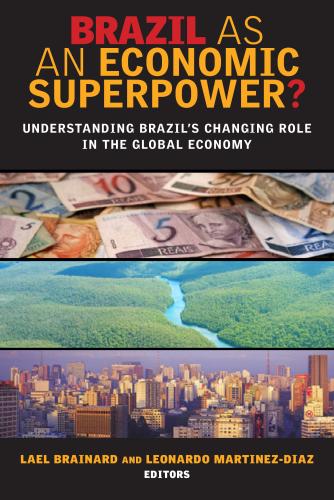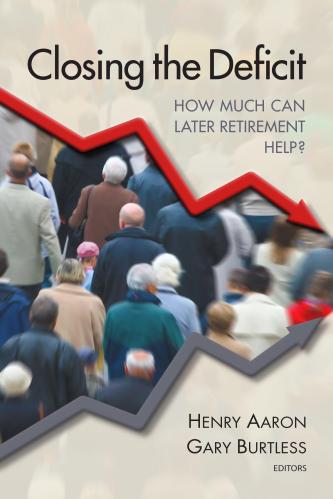Studies in this week’s Hutchins Roundup find that patients do not actively shop for medical care, aggregate demand shocks have a persistent impact on the long-run unemployment rate, and more.
Want to receive the Hutchins Roundup as an email? Sign up here to get it in your inbox every Thursday.
Patients do not actively shop for medical care
Lower-limb MRI scans vary widely in price across providers, despite having similar quality, write Michael Chernew of Harvard Medical School and coauthors. Even within a geographic market, the most costly scan is about five times more expensive than the cheapest one. Despite the availability of cost comparison tools, patients do not seem sensitive to price differences. They often receive care at high-price locations when cheaper options are available, and on average, bypass six lower-priced providers between their home and the location where they receive their scan, the authors find. Patients with higher out-of-pocket exposure are not much more likely to choose a low-cost provider. Instead, physicians’ referrals largely determine where patients receive care. Therefore, the authors suggest that focusing on incentives for referring physicians, rather than patient cost sharing, may be an effective way to reduce spending on health care. The authors estimate that if all patients went to the lowest-priced provider, insurer contributions towards lower-limb MRI scans would decrease by $333, on average, and patients’ out-of-pocket costs would decrease by $135 on average.
Aggregate demand shocks have a persistent impact on the long-run unemployment rate
Macroeconomic theory assumes that demand shocks have only a temporary impact on unemployment, with unemployment returning to its same natural rate after a recession. Gabriel Di Bella and Francesco Grigoli of the International Monetary Fund and Francisco Ramirez from the Central Bank of the Dominican Republic challenge this theory, suggesting that demand shocks substantially influence the unemployment rate in the long run. Using a sample of 23 countries, they find that shocks to aggregate demand explain about 40 percent of the changes in long-run unemployment rates, with the remaining variability explained by labor supply and productivity shocks. Additionally, they show that migrant-friendly policies, maternity leave, and higher spending on active labor market participation programs reduce the impact of demand shocks on unemployment; labor taxation, unemployment benefits, and union density amplify their impact. The authors conclude that strengthening labor market institutions can lead to less severe effects of demand shocks on unemployment and therefore a faster reversion to pre-crisis unemployment levels.
UK austerity caused Brexit
Until 2010, the United Kingdom used welfare payments to lessen growing wage differences across skill levels. This pattern stopped in 2010 as the U.K.’s austerity program started to bite, says Thiemo Fetzer of the University of Warwick. He documents that per person welfare spending fell 23 percent between 2010 and 2015, with the sharpest cuts occurring in the poorest areas. Using individual level data on 40,000 U.K. households from 2009 to 2015, Fetzer finds that the greater the exposure to welfare cuts, the more individuals expressed support for the U.K. Independence Party (UKIP)—a political party focused on leaving the European Union. A simple back of the envelope calculation, based on a strong link between support for UKIP and support for leaving the EU, suggests that austerity increased votes for the Leave campaign by 9.5 percentage points, 6 percentage points more than the margin of victory, Fetzer finds.
Chart of the week: Americans have been saving more than previously thought

Quote of the week:
“While uncertainties, notably related to the global trade environment, remain prominent, the information available since our last monetary policy meeting indicates that the euro area economy is proceeding along a solid and broad-based growth path. The underlying strength of the economy confirms our confidence that the sustained convergence of inflation to our aim will continue in the period ahead and will be maintained even after a gradual winding-down of our net asset purchases. Nevertheless, significant monetary policy stimulus is still needed to support the further build-up of domestic price pressures and headline inflation developments over the medium term. This support will continue to be provided by the net asset purchases until the end of the year, by the sizeable stock of acquired assets and the associated reinvestments, and by our enhanced forward guidance on the key ECB interest rates,” says Mario Draghi, president of the European Central Bank.
“In order to reap the full benefits from our monetary policy measures, other policy areas must contribute more decisively to raising the longer-term growth potential and reducing vulnerabilities. The implementation of structural reforms in euro area countries needs to be substantially stepped up to increase resilience, reduce structural unemployment and boost euro area productivity and growth potential. Regarding fiscal policies, the ongoing broad-based expansion calls for rebuilding fiscal buffers. This is particularly important in countries where government debt remains high. All countries would benefit from intensifying efforts towards achieving a more growth-friendly composition of public finances.”
The Brookings Institution is committed to quality, independence, and impact.
We are supported by a diverse array of funders. In line with our values and policies, each Brookings publication represents the sole views of its author(s).










Commentary
Hutchins Roundup: Shopping for medical care, impact of aggregate demand shocks on unemployment, and more
August 2, 2018